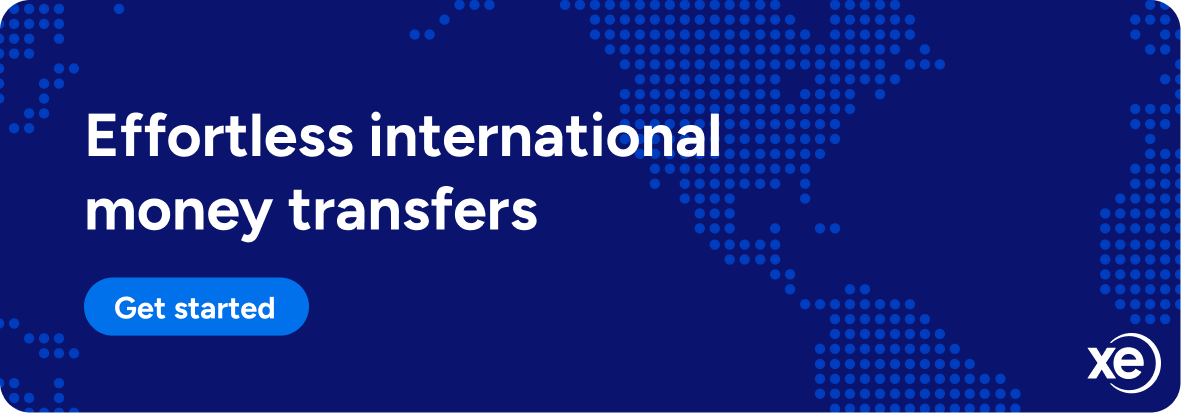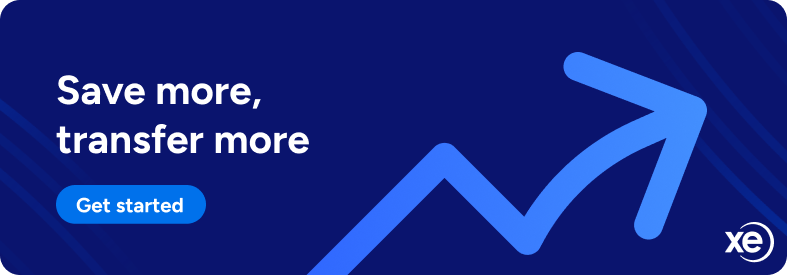
Purchase Order Definition: What Is a PO, and How Does It Work?
June 19, 2025 — 6 min read
Table of Contents
Key takeaways
A purchase order (PO) is a formal request from a buyer to a supplier, outlining order details like quantity, price, and delivery terms.
POs help businesses manage spending, reduce errors, and maintain a clear audit trail for every transaction.
Xe helps streamline international supplier payments with fast transfers, competitive exchange rates, and transparent costs.
Purchase Orders aren’t just paperwork, they play a key role in how businesses buy what they need. From raw materials to software and services, POs help keep things organized and on track. They provide a clear record of what was ordered, how much it costs, and when it should arrive.
In this guide, you'll learn what a PO is, how the process works, the different types of POs, and the benefits they offer. We’ll also show how Xe Business can help you manage supplier payments, especially when you're buying from overseas.
What is a purchase order?
A purchase order (PO) is a commercial document sent from a buyer to a supplier that confirms the intent to purchase specific goods or services. It includes critical information like what is being ordered, the quantity, price, delivery schedule, and payment terms. Once accepted by the supplier, the PO becomes a legally binding contract.
Think of it as a roadmap for the transaction—it ensures both parties are aligned before money is exchanged or products are delivered. This structure becomes even more important as businesses scale and manage multiple purchases across departments, vendors, and locations.
Key parts of a purchase order (PO)
Every purchase order contains specific information that helps align expectations between buyer and supplier. Here's what’s typically included:
PO Field | What It Means |
|---|---|
PO number | A unique number assigned to the order. Helps track the PO across systems. |
Buyer and supplier information | Names, addresses, and contact details of both companies involved. |
Item details | A clear description of the goods or services being ordered—including quantity. |
Pricing | The cost per item or service, plus taxes, shipping, or discounts if applicable. |
Delivery terms | When and where the order should be delivered. Includes expected timelines. |
Payment terms | Agreed payment schedule, such as Net 30 or Net 60. |
Approval | Internal sign-off showing that the order has been reviewed and approved. |
Having these fields clearly filled out helps both sides reduce back-and-forth communication, ensures consistent documentation, and improves processing speed during reconciliation and auditing.
Why issue a purchase order?
At first, a purchase order might seem like extra paperwork, but it actually makes the buying process easier. It adds structure, removes confusion, and helps everyone stay on the same page.
Legal protection
When a PO is accepted by the supplier, it acts as a legally binding agreement. If there’s ever a dispute about what was ordered or delivered, the PO becomes a vital piece of evidence.
Internal cost control
Requiring POs for all purchases ensures spending is intentional and authorized. This is especially useful in larger teams, where purchases may otherwise happen without visibility or approval.
Operational clarity
Everyone involved—procurement, finance, suppliers—can refer to the same document. That reduces misunderstandings and helps keep operations running smoothly.
Audit readiness
A well-managed PO system makes audits easier. Each PO creates a paper trail that links to an invoice and payment, helping demonstrate financial responsibility.
Types of Purchase Orders
Not every purchase is the same, and neither are POs. Businesses use different types of POs depending on the purchase structure and frequency.
PO Type | Best For | Overview |
|---|---|---|
Standard PO | One-off orders with fixed deliverables | Ideal for unique purchases |
Blanket PO | Recurring orders under a pre-agreed umbrella | Great for suppliers or maintenance |
Planned PO | Future purchases with flexible delivery | Used for manufacturing inventory |
The purchase order workflow
The PO process follows a logical flow that connects departments, protects budgets, and ensures accountability. Here’s how it typically works:
Purchase request (requisition): Someone in the business identifies a need and submits a request, often through a procurement system.
Approval: A manager or finance team reviews and approves the request to make sure it aligns with budget and company policy.
PO creation and distribution: The approved request becomes a PO, which is then sent to the supplier for review.
Supplier acceptance: If the supplier agrees to the terms, they confirm the PO—at this point, it becomes legally binding.
Order fulfillment: The supplier ships the goods or delivers the service as outlined.
Three-way match: The buyer compares the PO, the invoice, and the delivery receipt to confirm everything matches before paying.
Payment and record keeping: Once verified, the invoice is paid and the transaction is documented for audit and reporting.
This process may sound detailed, but with modern tools, and experienced partners like Xe handling the payment side, it becomes a smooth and repeatable system.
PO vs invoice: What’s the difference?
The PO and invoice are both critical documents, but they happen at different stages in the purchase cycle and serve different purposes.
Aspect | Purchase Order | Invoice |
|---|---|---|
Who issues | Buyer | Supplier |
When | Before delivery | After delivery |
Purpose | Authorizes the purchase | Requests payment |
Legal standing | Becomes contract on acceptance | Enforcement of payment terms |
Frequently asked questions (FAQs)
Is a PO legally binding?
Yes—once accepted by the supplier, it serves as a legal contract binding both parties.
Can I invoice without a PO?
It’s possible, but not ideal. Having a PO improves clarity, transparency, and tracking—especially for business or international transactions.
What is a three‑way match?
It’s the process of confirming that the PO, the goods received, and the invoice all match before releasing payment.
When aren’t POs needed?
For small, low-value, or one-off purchases like office supplies, many businesses skip the PO process to keep things simple.
Save time and money on overseas payments with Xe Business
Managing international supplier payments doesn’t need to be complex. With Xe Business, you can move from purchase order to global payment efficiently, securely, and with confidence.
Send payments in multiple currencies with bank-beating exchange rates
Avoid hidden fees with upfront, transparent pricing
Simplify batch payments for international vendors and invoices
Track transfers end-to-end for peace of mind and payment visibility
Whether you’re sourcing materials from abroad or managing vendor relationships across borders, Xe helps you stay in control of your spend—no matter where your suppliers are based.
Purchase orders are more than paperwork, they’re a smart way to control spending, track transactions, and strengthen supplier relationships. By understanding how POs work and integrating them into your workflow, your business can operate with more structure, security, and efficiency. And when those POs turn into global payments, Xe Business helps you complete the cycle faster, for less—keeping your international operations moving smoothly.
Some key features of Xe Business include:
Competitive exchange rates: Access great FX rates with no hidden markups. Xe Business helps you reduce currency conversion costs on international payments.
Mass payments: Pay multiple recipients across borders in a single transaction. Our bulk payment solution helps you streamline payroll, vendor settlements, and recurring payments.
Rate alerts and limit orders: Set a target exchange rate and Xe will automatically process your transfer when your rate is met—so you never miss an opportunity.
Built-in invoicing tool: Generate and send professional invoices right from your Xe account, making it easier to get paid internationally.
The content within this blog post is not intended for use as financial advice. This content is for informational purposes only.
Simplify international money transfers for your business
Xe Business makes it easy to pay global suppliers with fast, secure international money transfers, competitive rates, and no hidden fees.

July 16, 2025 — 4 min read

July 16, 2025 — 5 min read

July 14, 2025 — 6 min read

May 1, 2025 — 5 min read

April 15, 2025 — 6 min read

May 29, 2024 — 5 min read

